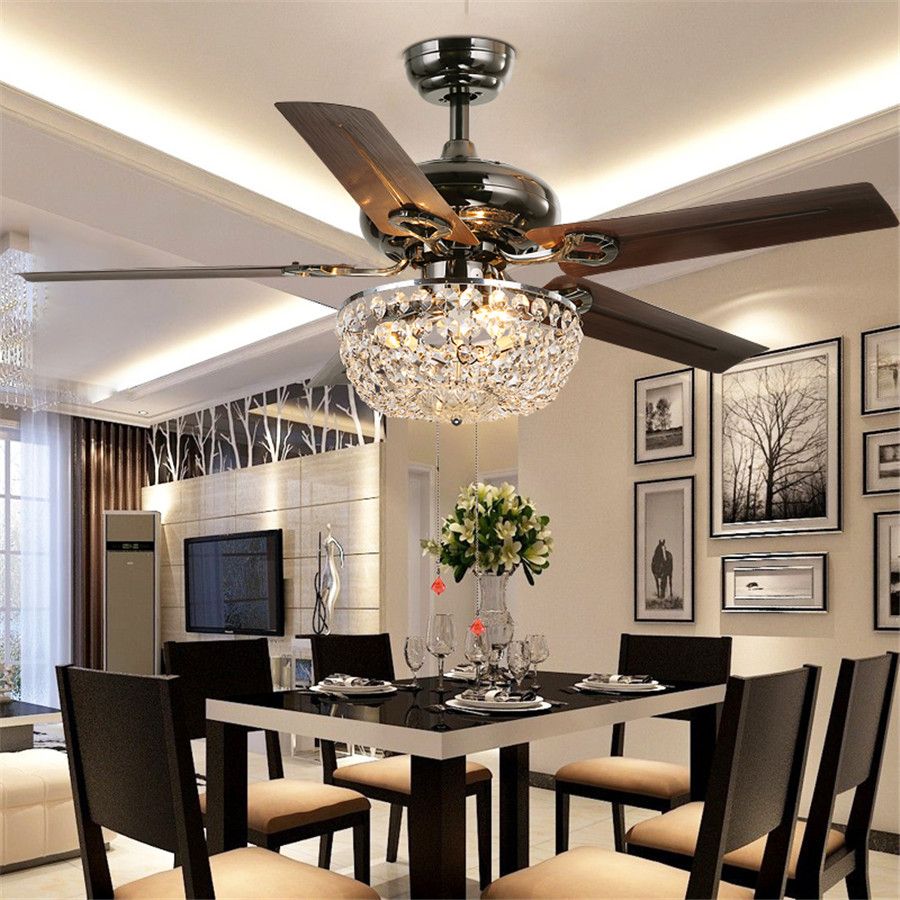dining room light with fan

whether you're building a newhome or renovating an old one, recessed lighting can be a keyelement in both the function and style of any space. recessed lighting offers a clean,streamlined look in a home. it can increase theamount of light in a room, highlight artwork orother special features, and open up spaces sothey look and feel bigger. the first step in installing recessedlighting in your home is the planning. in general, recessed cans should bepositioned six feet from each other.
if your rooms won'taccommodate this, you'll have to adjust your calculations. if there is insulation in the ceiling,buy insulation-compatible, or ic, lights. standard recess lights will dangerouslyoverheat when surrounded by insulation. experiment with several configurationsand then take your plans with you to your local home depot for advice. you must also pick out thetrim that will fit your needs. open trim is the simplestand least expensive option.
baffle trim diffuses light soit's more evenly distributed. fisheye or eyeball trim swivelsto highlight a decorative feature. and reflective trimoffers maximum brightness. decorative trims are also available tocomplement your interior decoration. now, it's a good idea to choose boththe size of the recessed housing and the trim at the sametime, or install housings with flexible trim optionsand choose those later. kits are available whichcome with housing and trim. once you have purchasedyour recessed fixtures,
lay out the lights using the mountingtemplates that came with them. the templates show you what size hole tocut so tape the temples to the ceiling to get an idea of where your lifeshould go and how they'll look. now, as always, the most importantstep in any electrical project is to shut off the power at thecircuit breaker, so don't forget. use a stud finder to make sure thelights will not overlap a joist. locate and mark each of the joistsin the room so you can avoid them. if you are installingbetween two floors, you will need eightinches of vertical space
above the ceiling to accommodatethe mounting hardware. you can check that you haveenough space by drilling a hole and poking a bent wire up into it. if you have less than eight inchesof vertical space above the ceiling, purchase a low clearance canister. also, if you areinstalling between floors, you will need to drillholes in your joists to accommodate the wires that will runfrom light to light that are separated by the joists, but makeas few holes as possible
and do not cut holes greater than aquarter of the width of the joists. you are now ready to cutthe opening in the ceiling. you can use a dry wall or holecutting saw to cut the hole, but make sure to cuteach hole precisely. if the hole is even just a fractiontoo big, the can may not clamp tightly. also take care not to snag any wiresthat may be in the ceiling cavity. the second step is torough in the wiring. run the cable from a powersource to a switch box, and then to the location of the can.
allow at least 16 inches ofextra cable to make wiring easy. strip the insulation from the wire. open the light's junction box. usually a plate will pop off. run your cable intothe box and clamp it. connect it black to black, whiteto white, and ground to ground. fold the wires into thebox and replace the cover. it's time to mount your light. most remodel cans have three or fourclips that clamp the can to the ceiling
by pushing down on the top ofthe drywall or the plaster. pull the clips in so they donot protrude outside the can. slip the can's box into the hole. then push the can body upinto the hole until its flange is tight to the ceiling. with your thumb orscrewdriver, push each clip up and outward until it clamps the fixture. the last step is to add the trim. most trims are mounted with coilsprings, or squeeze-able rod springs.
if you have rod springs, squeezeand insert both ends of each spring into their assigned holes. then push the trim up. if you have coilsprings, hook each spring to its assigned hole inside the can. pull out each springand hook it to the trim. then carefully guidethe trim into position. different trims require different bulbs. the ones you'll need are markedon the inside of the trim.
all that is left now is to turn onthe power at the circuit breaker and test your work. and that's it. now, sit back and enjoyyour new recessed lighting.